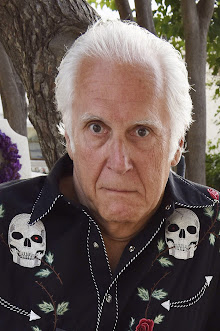Reporting live from the UK! I left Baltimore in mid-October for a little more than a month of travel, experiencing autumn season through a few countries in Europe. First stop: London, England. Tony and I stayed in an inner-ring neighborhood called Marylebone (pronounced Marly-bone). The neighborhood began as a medieval village and slowly developed into an urban Georgian community with streets laid out in a grid and terraced houses.
 |
| Halloween anticipated in Marylebone |
 |
| Everywhere is classical architecture |
Marylebone Road was laid out in the late 1700s as a direct route into the heart of the city. Later, handsome Victorian mansion flats were built up, a train station followed, and in the 1930s BBC opened its broadcasting house here. London’s top physicians set up practices on Harley Street, further establishing its importance. But a large number of vacancies along the Marylebone High Street was troubling; not until the 1990s did the community activively recruit retailers to come in—and blessedly, this was done for quality, not the ability to rent. Hence, it’s a neighborhood of bookshops (even carrying my work, hooray!) small restaurants and coffee shops, and lovely household goods and clothing. We plenty of embassies and an international school, so the air rang with the soft accents of many nations.
 |
| Daunt specializes in travel and foreign-set books |
I’m a huge fan of neighborhoods where one can walk to everything, including three nearby tube stops (Baker St, Edgware and Marylebone). We were near Holland Park, another posh neighborhood that has a significant history of artists. In the late Victorian period, and estimated 1500 artists had studio/residences in London, a fact that seemed staggering given what we generally think about artist earnings, and the high price of terrace houses in London.
 |
| Leighton House |
I’ve longed to visit Leighton House, the home of Frederic, Lord Leighton (1830-1896), an artist who painted portraits of many nobles and was on faculty at the Royal Academy of Arts. The artist grew up on the Continent, a fact that engendered lifelong suspicion of his nationality and religion. He ignored the snobs and threw himself into frequent travel to the Middle East and North Africa, where he gathered inspiration for painting and his home. Leighton, a lifelong bachelor, collected tiles, antiquities and textiles, mostly from Syria and Algeria, and also had British craftsmen replicate designs when he began furnishing his extroardinary, custom-built residence in the 1870s.
The home’s stunning center is called Arab Hall, a vibrant, turquoise room covered in medieval tiles from Damascus although the original inspiration was a 12th-century Sicilian palace room. Leighton’s friends and fellow artists working on his interior included the potter William DeMorgan and artist-illustrator Randolph Caldecott. This cross-pollination of friends and cultures is an idea that has fueled my own writing so I felt at home as I slowly toured the grand residence, which also features an addition holding modern art from the Near East and North Africa donated or loaned recently. In the original house rooms we can admire paintings by Leighton and his friends, who included John Singer Sargent, John Everett Millais and Lawrence Alma-Tadema.
Frederick Leighton was held in high esteem by Queen Victoria, who awarded him a baronetcy the day before his death. Having seen his work, read some words and experienced his house, I feel as if I’ve been in the lost world of a high Victorian aesthete who played a formative role introducing the arts of the East into Western society.
 |
| Sambourne House |
A few minutes’ walk away lay Sambourne House, another Holland Park artist home that had the benefit of original furniture and artwork by its former owner, Edward Linley Sambourne, a cartoonist for Punch Magazine. The house in the midst of a terrace group was part of a respectable middle class neighborhood, a step down from the grandeur of Leighton House, but all the more interesting to me because of its original wallpapers, pens, dishes, and every sort of bric-a-brac imaginable.
 |
| Eddward Linley Sambourne’s drawings |
The artist, who went by the name Linley, was born in 1844 and was an apprentice marine engineer who made caricatures and studied art for pleasure. He was discovered by an editor at Punch in the 1860s and thereafter had a booming career making finely detailed, satirical illustrations. His wife, Mary Ann, and two children, lived a happy and creative life.
It was elating to travel through this house of a commercial artist and feel a kinship in design style. Both Mary Ann and Linley passionately decorated, occasionally having differing views of wallpaper and a room’s best use: who doesn’t live this way? Sambourne House is an epic example of the Aesthetic and Arts&Crafts movements. The home displays rich, deep colors that speak of cozy autumn and has timeless William Morris wallpapers in so many rooms, even that of the home’s maidservant. I loved seeing Sambourne’s drawing table and the photographs he’d made of friends poised in dramatic positions that he’d then work with to make his dynamic cartoons with charming Victorian flourishes.
London has always been a place of fashion—from the Regency architects making houses with grand rooms, to today’s international stylemakers wearing the perfect flowing raincoats and barrel jeans as they tread along Marylebone High Street. In just five days, I had adjusted not only to Greenwich time, but tippled down a historic rabbit hole. In fact, we went for the Alice in Wonderland tea at Sanderson’s Hotel the very next day.
 |
| Alice of Wonderland tea at Sanderson’s Hotel |




























No comments:
Post a Comment